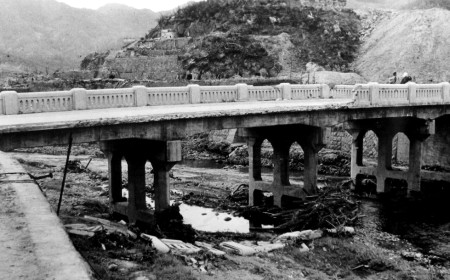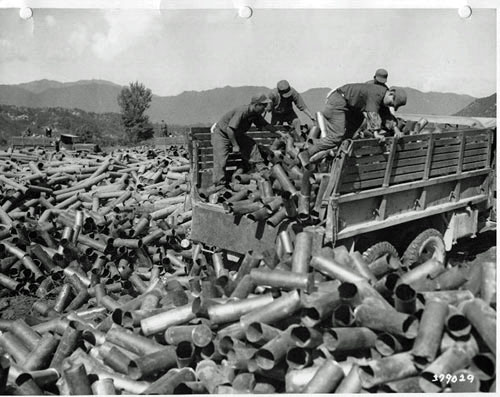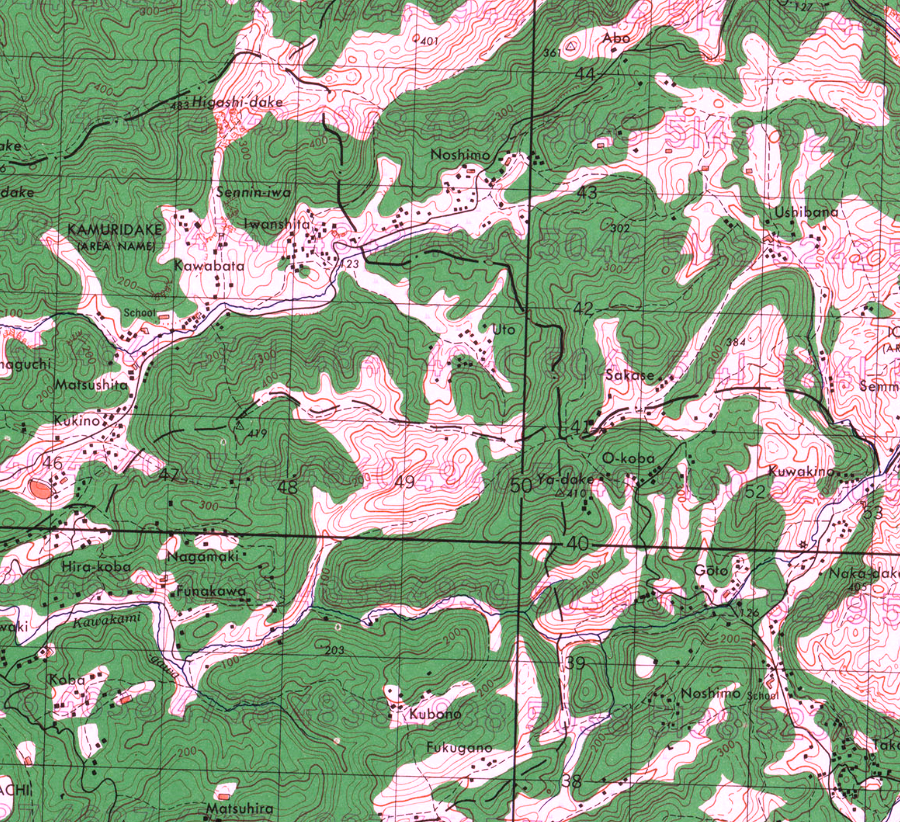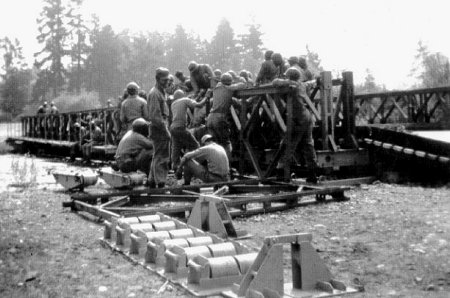[a portion of the entry for November 29, 1945 : X+14 – south of Kanoya, Kyushu]
…Without breaking stride, two lead tanks rolled onto the bridge, followed by two armored cars. Riflemen and gunners on the north bank eyed the south bank warily. Astride a road parallel to the river was a long cluster of houses and fish processing buildings. Behind those buildings the land again rose steeply into the next forested mountain ridge.
Up to that point we had not seen a living soul since entering town. Upon leaving town they came out to see us. The first tank rolled off the far side of the bridge and turned immediately to face the first buildings on its left. People of all different sizes and attire ran out from behind several buildings, thirty or forty people in loose columns from every alley. Some brandished sticks and clubs, others carried satchels or old suitcases. The lead tank opened up, its machine gunners ignoring spears and clubs in favor of people carrying likely bombs. The second tank pulled up close alongside to join in.
On top of the bridge two scout cars paused to bring their four machine guns into action. But from under the bridge another eight or ten figures crawled unseen over the far railing. Soldiers who had dismounted were immediately in hand-to-hand combat, rifle butt against club. That gang of civilians also had bombs, and they were only feet from the armored cars before being spotted. At least three charges went off, in close succession. The last explosion tossed one scout car, armored, model M3A1, fifteen feet into the air. Men and guns and pieces of each were tossed in all directions. The remains of the chassis came crashing down next to a splintered hole in the bridge deck, and the entire thing went smashing through, taking several bridge girders with it into the fast running water below.
Our tanks had beat off the mob attack, the lead tank taking only superficial damage from one explosion. But they were now stranded, and the hill in front of them came alive with small arms fire against American soldiers around the bridge, who were still getting up from the blasts that wrecked the bridge.
The American line on the near riverbank returned fire, a hail of bullets ripping into the brush and trees opposing us. Without prompting one or more Navy ships to our left added to the fire with automatic cannon. No one could see the enemy under the dense shade of evergreen trees, the low winter sun behind them. But an intense volume of fire was distributed over the entire hillside.
Shortly the bigger Navy guns began to walk a pattern of five inch explosive shells along the hill. The circling attack planes were circling no longer, having been released by their ground controllers to come lend a hand near the shore. They strafed in long passes near the river, after loosing rockets into crevices higher up that Navy shells could not get into.
Under smoke from the bombardment, and a deliberate smoke screen, the tankers disabled their vehicles and got back across the river along one remaining truss of the tattered bridge. All the injured and most of the dead were recovered, and this special task force of the 8th Cavalry Regiment pulled back out of downtown Uchinoura, to the relative safety of “uptown” Uchinoura.












